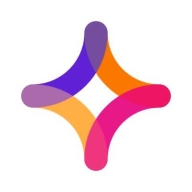

Jitterbit Harmony and Zapier compete in the integration platform market, each offering unique advantages for automating workflows. Jitterbit Harmony excels in data integration capabilities, while Zapier holds an edge in versatility with its extensive library of pre-built connectors.
Features: Jitterbit Harmony provides advanced data transformation tools, extensive enterprise-grade integrations, and seamless SAP and Salesforce connectivity. Zapier offers over 2,000 pre-built applications, easy-to-use drag-and-drop integrations, and a diverse range of Zaps for customizable automations.
Room for Improvement: Jitterbit Harmony could enhance its user interface to be more intuitive for non-technical users, improve scalability features, and reduce the technical complexity of deployment. Zapier could lower its pricing for small users, expand integration actions within its current offerings, and increase support for larger scale enterprise applications.
Ease of Deployment and Customer Service: Zapier focuses on quick deployment with a no-code approach, supported by responsive customer service. Jitterbit Harmony targets more technical deployments with a robust support system designed for organizations needing detailed integration solutions.
Pricing and ROI: Jitterbit Harmony typically requires higher initial investment, offering robust data integration and scalable functionality suited for large enterprises. Zapier provides affordable pricing with flexible plans, ensuring considerable immediate value and cost-effectiveness, particularly attractive for small to medium-sized businesses.
In a scenario where employing three resources for three months might cost approximately $18,000 to $20,000, Zapier provides substantial cost savings.
Their technical support is good; they respond promptly and are very helpful.
This can help if you need assistance, as you can communicate with the community and support system, and most issues are already resolved by AI.
Sometimes, in my early days, when I was stuck with something, they helped me solve these issues, and even helped me solve some of my automations.
Make.com and nEn nEight n excel in handling complex automation tasks.
Scaling it gets quite expensive, and while I cannot evaluate it purely from a technology perspective, compared to Workato, I would give Zapier a seven for scalability.
In my current company, we had significant challenges with Zapier regarding maintenance, as Zaps were often broken, not necessarily due to Zapier, but due to changes in the input variables.
The error message options in the dashboard should be improved. It should be user-friendly so that beginners or non-technical users can figure out the problems and solutions on their own.
Specific workflows could be created to pull transformed data through Zapier workflow directly into visualization tools for dashboard and report creation.
I would appreciate if there would be a feature where we can use actions right after loops. Currently, you cannot use any other action after the loop. Everything needs to be within the loop.
The pricing is in accordance with market standards and even lower in some cases.
The pricing of Zapier is slightly higher compared to other market automation tools such as Pabbly, Make.com, and N8N, which have good features but are priced lower than Zapier.
Creating integration points through webhooks is particularly useful for anyone working on integration projects.
The automation capabilities eliminate the need for manual data retrieval or analysis from different sources.
They have approximately 7,000 connections.
| Product | Market Share (%) |
|---|---|
| Zapier | 2.6% |
| Jitterbit Harmony | 1.3% |
| Other | 96.1% |


| Company Size | Count |
|---|---|
| Small Business | 8 |
| Midsize Enterprise | 3 |
| Large Enterprise | 1 |
| Company Size | Count |
|---|---|
| Small Business | 29 |
| Midsize Enterprise | 10 |
| Large Enterprise | 7 |
Jitterbit Harmony offers an advanced integration platform that simplifies data transformation, helps users quickly connect apps, and automates workflows, streamlining complex business processes efficiently.
Designed to meet the high demands of modern businesses, Jitterbit Harmony enables seamless integration across cloud and on-premise environments. By leveraging its powerful tools and user-friendly design, users can accelerate innovation, reduce operational costs, and enhance productivity. It bridges the gap between traditional and emerging technologies, ensuring organizations can adapt quickly to market changes and remain competitive.
What are the key features of Jitterbit Harmony?Jitterbit Harmony finds its application across numerous industries, from enhancing data integration in the healthcare sector to optimizing supply chain logistics in manufacturing. It supports financial institutions by improving transaction processing and facilitates real-time data connectivity in retail environments, making it a versatile choice for diverse industries looking to innovate rapidly.
Zapier is a tool for primarily non-technical users to connect together web apps.
An integration between two apps is called a Zap. A Zap is made up of a Trigger and one or more Actions or Searches.
Whenever the trigger happens in one app, Zapier will automatically perform the actions or searches in another app in order.
Zaps are very lightweight and easy to set up. Zaps do not import or export old data (they only operate on new items created after the Zap is enabled). Zaps are also not kept in sync ("two way syncing") after the Zap is triggered.
Zaps are deceivingly simple if you're used to dealing with complex and difficult integrations. Their simplicity is what enables anyone to create them.
We monitor all Cloud Data Integration reviews to prevent fraudulent reviews and keep review quality high. We do not post reviews by company employees or direct competitors. We validate each review for authenticity via cross-reference with LinkedIn, and personal follow-up with the reviewer when necessary.